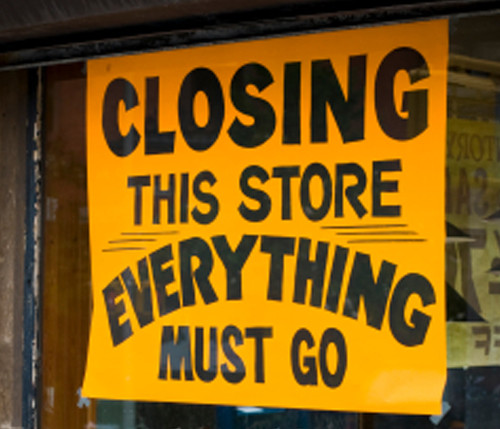With the recent collapse of long-established retailers such as Comet, Jessops, HMV and Blockbusters, questions have been raised about how high street retailers can survive in challenging conditions. Faced with the growing popularity of online shopping, how can bricks and mortar retailers up their game in-store to ensure they do not succumb to the fate of their failed counterparts? Kirill Gorynya, CEO of Synqera, a payment and marketing software solution, believes the key to increased high street sales lies in retail technology innovations. Here, he explores how retailers can increase in-store activity to engage their customers and, ultimately, convince them to choose bricks over clicks.
The year had barely begun when news hit of more big names disappearing from the UK high street, further highlighting the danger retailers face if they refuse to move with the times and adopt new customer engagement strategies. Customer engagement needs to be driven by innovation in 2013 – and there has never been a better time to look at employing retail technology. Responding to evolutions in how consumers use technology can help keep retailers in the game.
Retailers with physical premises have an advantage over those online because they can use store visits to engage and upsell. A recent Connecting with Customers report commissioned by LivePerson, which assessed the needs and expectations of online shoppers, revealed that 51 per cent will give up immediately and abandon an online purchase if they encounter difficulties. The same report showed customers are generally more comfortable seeking help when they are in a store than when shopping online. This is evidence that the battle of the bricks and mortar retailer isn’t a lost cause, and retailers should be optimising the unique opportunities offered by the physical presence of a customer.
So far, the primary customer loyalty tactic has been based on loyalty cards and schemes, which has allowed retailers to gather insights and reward their customers. The recent Kantar Worldpanel’s UK Shopper Survey showed that shoppers are switching brands more often and being increasingly influenced by promotions – in fact, 40 per cent of brand sales are now led by promotions – so retailers need to recognise this as an increasingly important area. However, a more sophisticated approach needs to be considered. As consumers become inundated with loyalty offers, they will become indifferent to them, and more innovative ideas will be needed to cut through the clutter. This is why I believe brands and retailers should embrace the concept of providing bespoke promotions tailored specifically to each shopper.
Until now, the opportunity to engage customers at the cash desk has not been fully explored. It is estimated that customers spend around 40 seconds of downtime at the point of purchase – yet retailers have not sought to capitalise on this precious time – and the technology hasn’t been sophisticated enough to drive engagement.
Emerging technology means retailers can now interact on a whole new level – with virtual assistants at the cash desk, providing deals and offers in real-time that are tailored to our specific needs. We have developed a first of its kind payment and marketing software solution to do just that; respond intelligently to customer interaction, taking successful online tactics such as real-time targeting and applying them offline within a retail environment.
Our solution, called Synqera, analyses valuable customer data to deliver hyper-personalised content tailored not only to each customer’s preferences, as mainstream loyalty schemes do, but also to how they’re feeling right then and there.
A sophisticated device with built-in camera and microphone can establish each customer’s gender, age and even their mood, to drive upsell and cross-sell of products and related services. It can combine information available from a customer profile (as it can be fully integrated with the retailer’s CRM system) with factors such as weather conditions, to create a tailored offer. For example, a profile showing that the customer is a mum, combined with the terminal’s ability to take into account that it is a cold day, could then prompt a coffee offer, either for an off-the-shelf product or in the store café.
The potential for this type of solution is huge, because our technology can combine this personal real-time information with other data about the customer’s buying habits to make content as tailored as possible and relevant at that particular point in time – securing further customer loyalty.
The Synqera solution can also integrate with the ERP and POS systems, so offers and promotions take into account issues such as stock availability – further enhancing customer loyalty by ensuring customers won’t be given a promotion related to an out-of-stock product.
As customers are increasingly receptive to this kind of intelligent interaction, it will form the future of customer loyalty. Engaging them via outdated, mass-reach methods will become more and more ineffective as customers become bored of the same approach. And when customers become bored, they move on – and that is when the retailer loses the battle.
Retailers will not only reap customer loyalty benefits from this kind of technology, but they can also benefit from the new income stream from brands using such virtual assistants as an additional advertising platform – as well as being able to support convenient payment methods, such as contactless payment and mobile wallet.
The technology is there, the customer desire and demand for intelligent interaction is there, all that is left is for retailers to embrace the technology and view it as a vital step in the new era of retailing.






